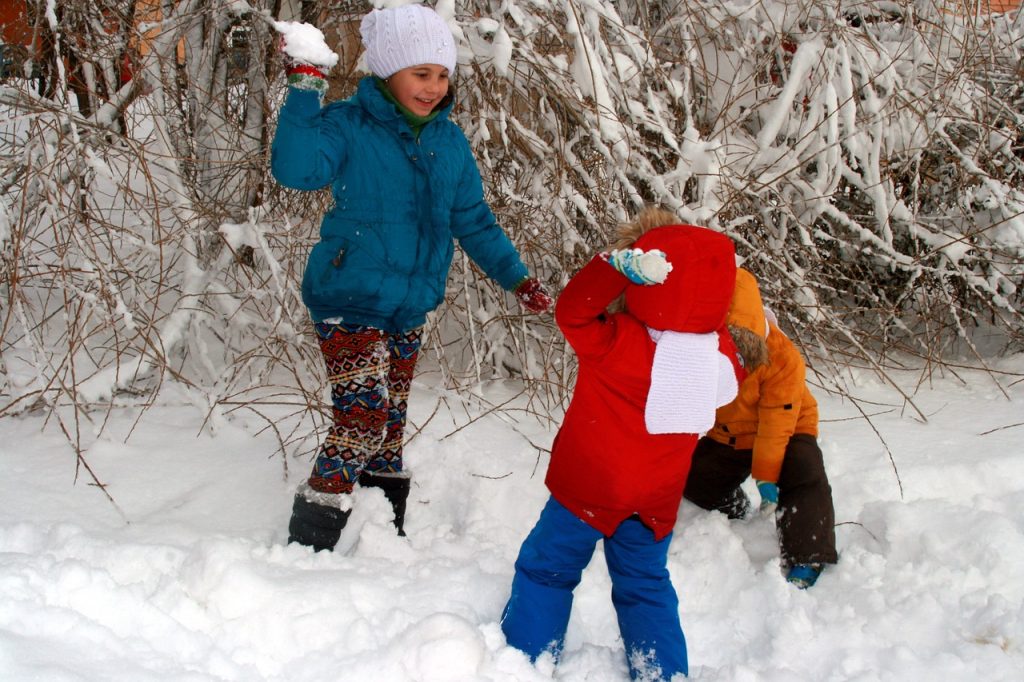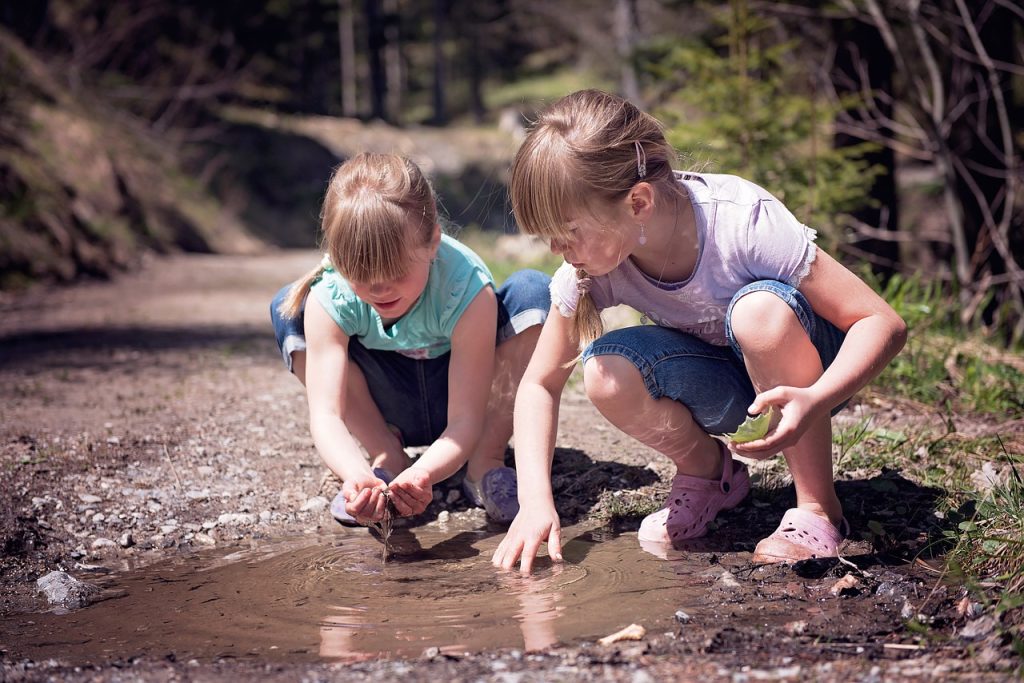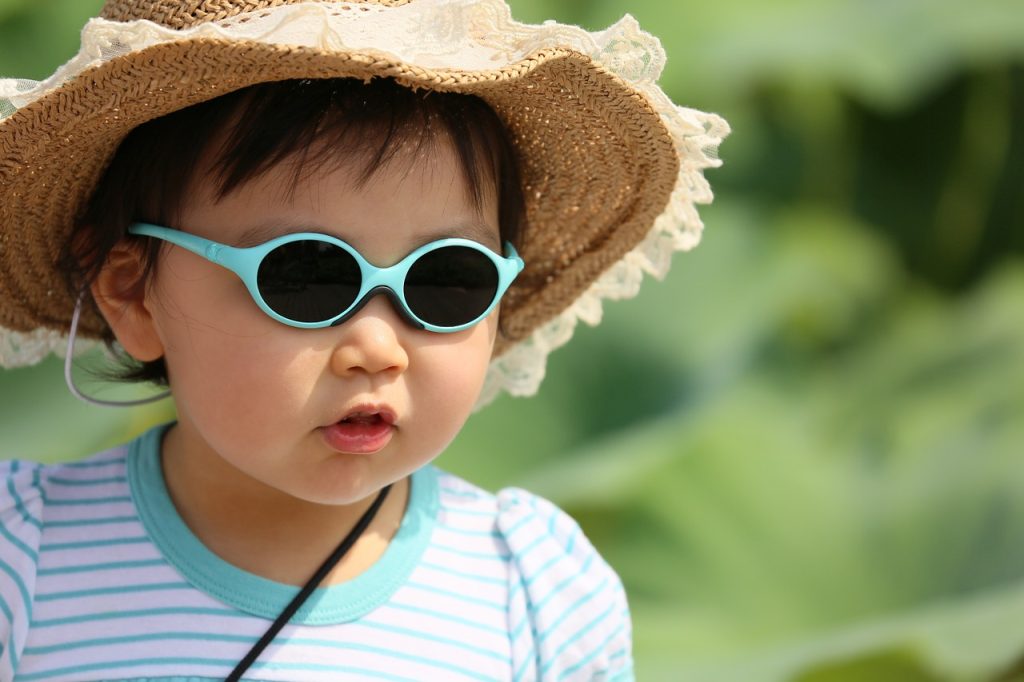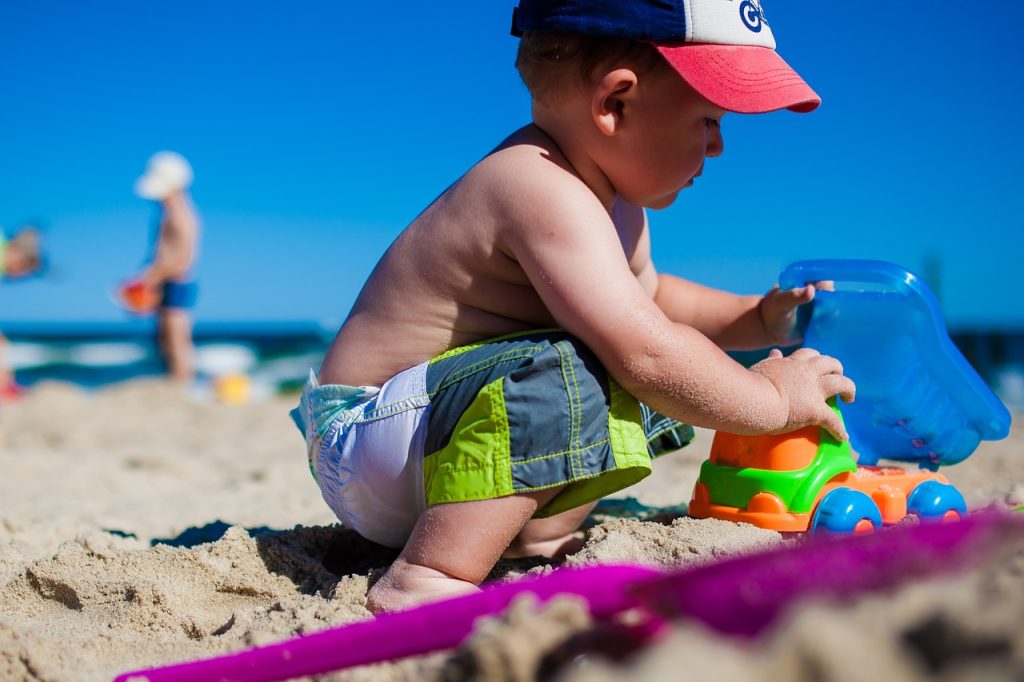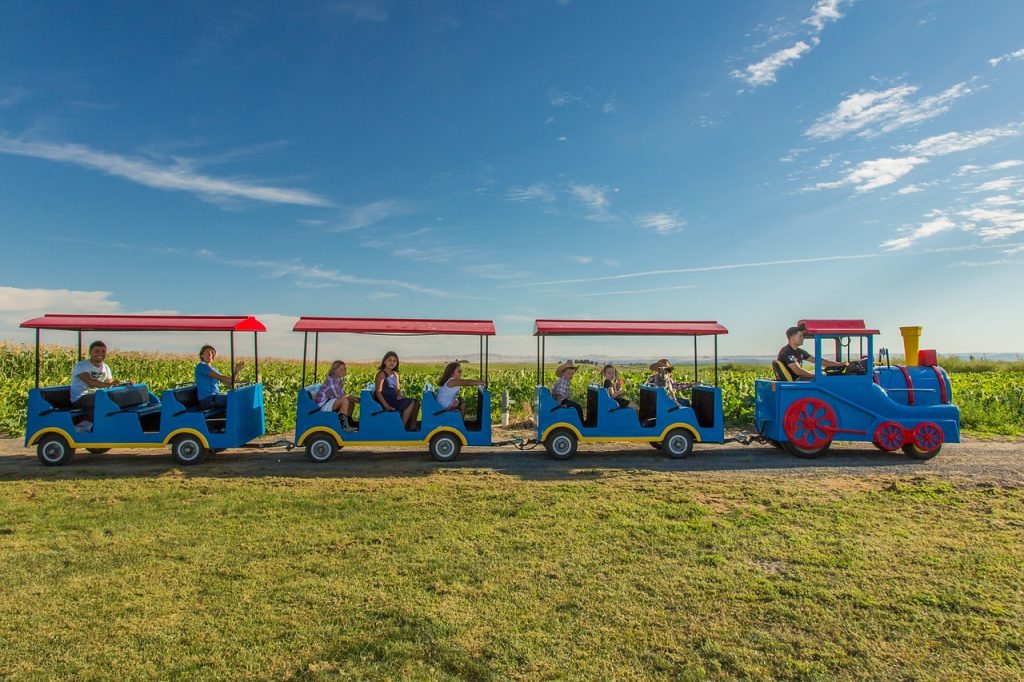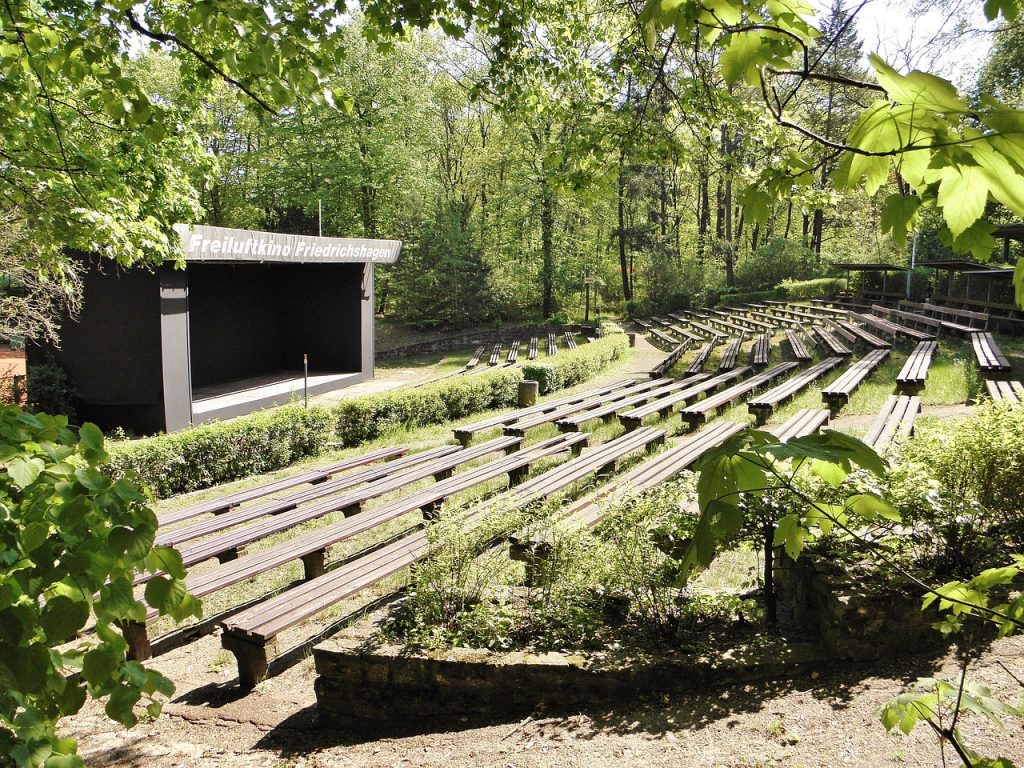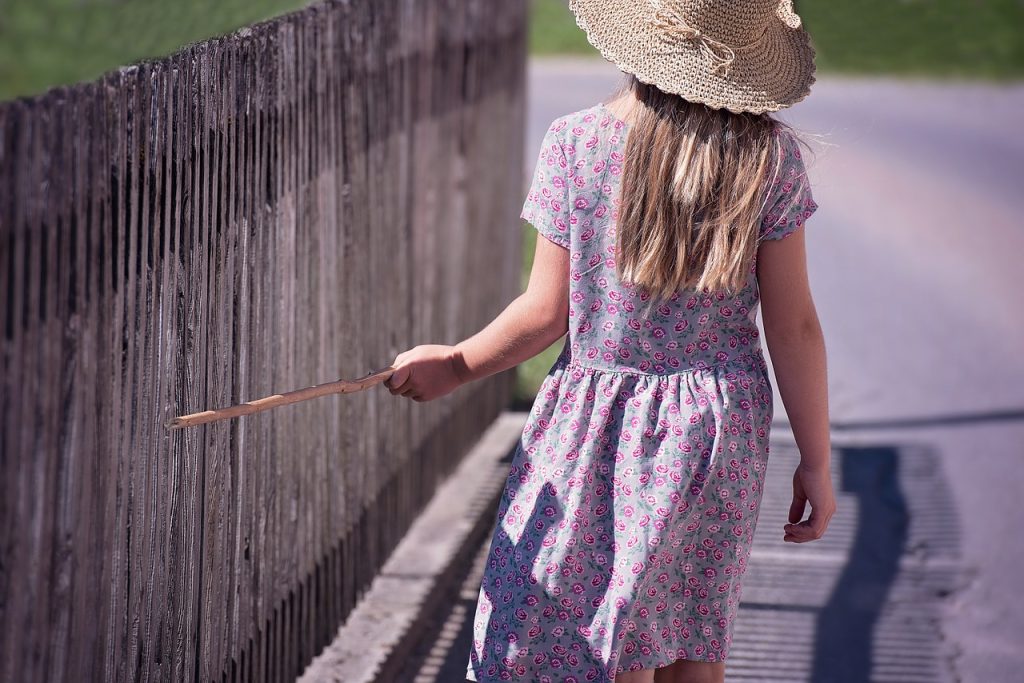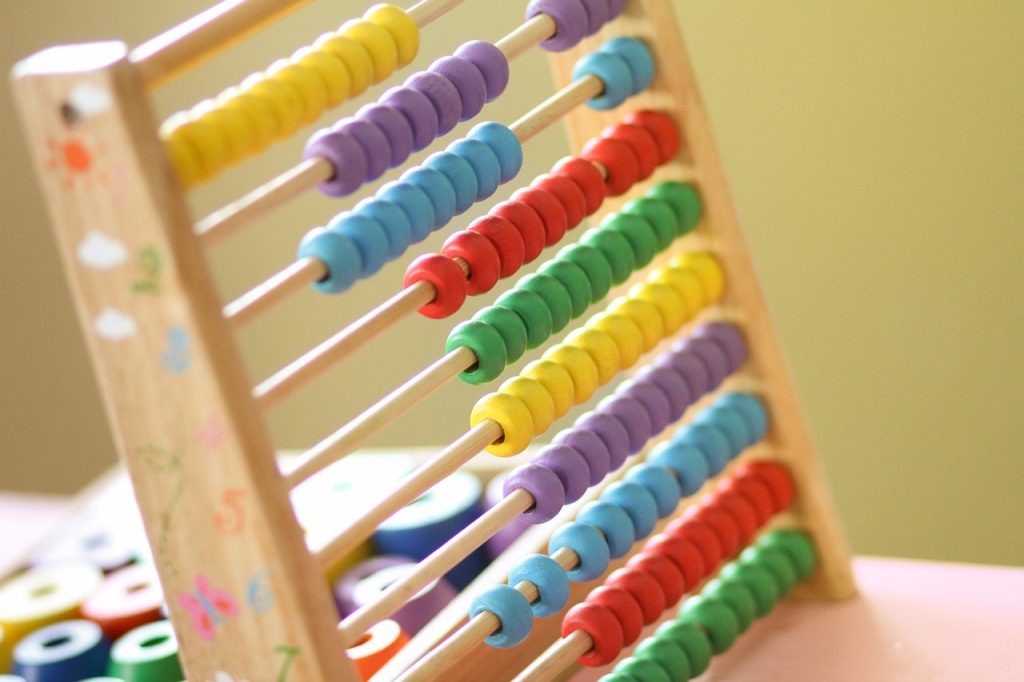
School may seem a long way away but you can keep those mathematical skills ticking over and even developing, all while having fun.
Count – forwards, backwards, every which way. Start from different numbers and don’t be tempted to go on from 20 all the way to 100 if you don’t need to. At an early age this means saying a sequence of numbers to 5 or 10 but back that up with counting out concrete objects 1…2…3 and the understanding that ‘3’ relates to the total number of objects as well as what you say when you put the third object down. Bring this in naturally, for example you’re pouring drinks for your charges and their friends – ask them how many they need, get them to count out the glasses, count as you’re pouring the drinks. Count the number of petals on a simple flower or try to count the number of petals on a daisy – are they all the same? Get children used to the idea of estimating by guessing a number before you count the petals. Use mathematical language like the first swing and the second swing. Make collections and count them out, and use the shells or stones or sticks you’ve collected to sort them later.
Continue reading “Summer maths”



